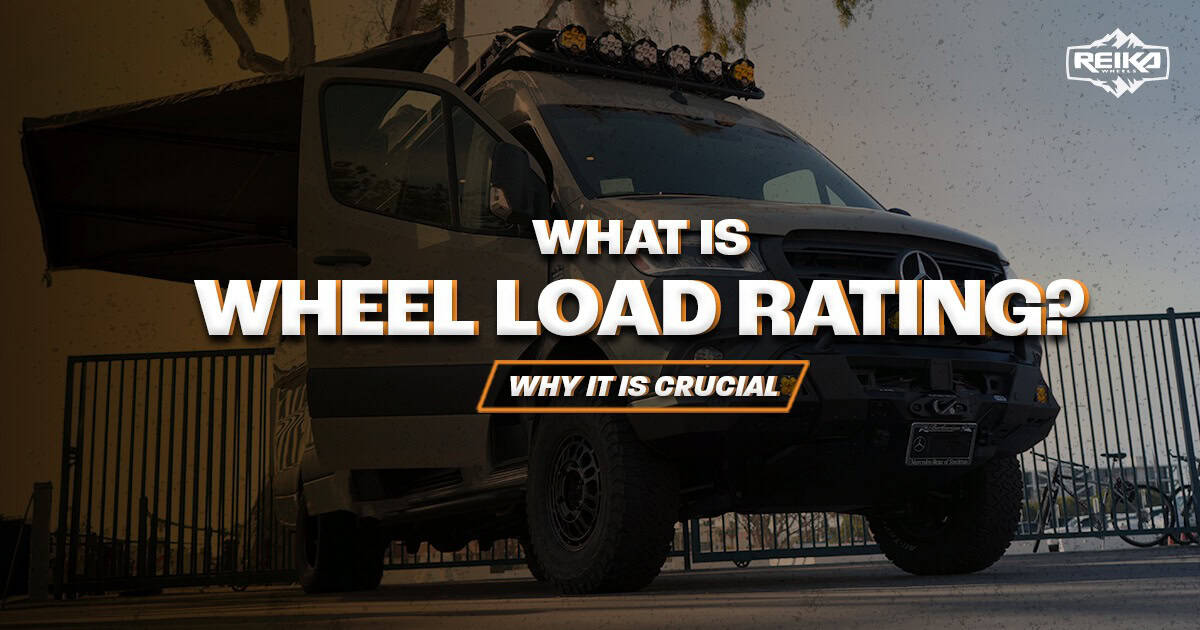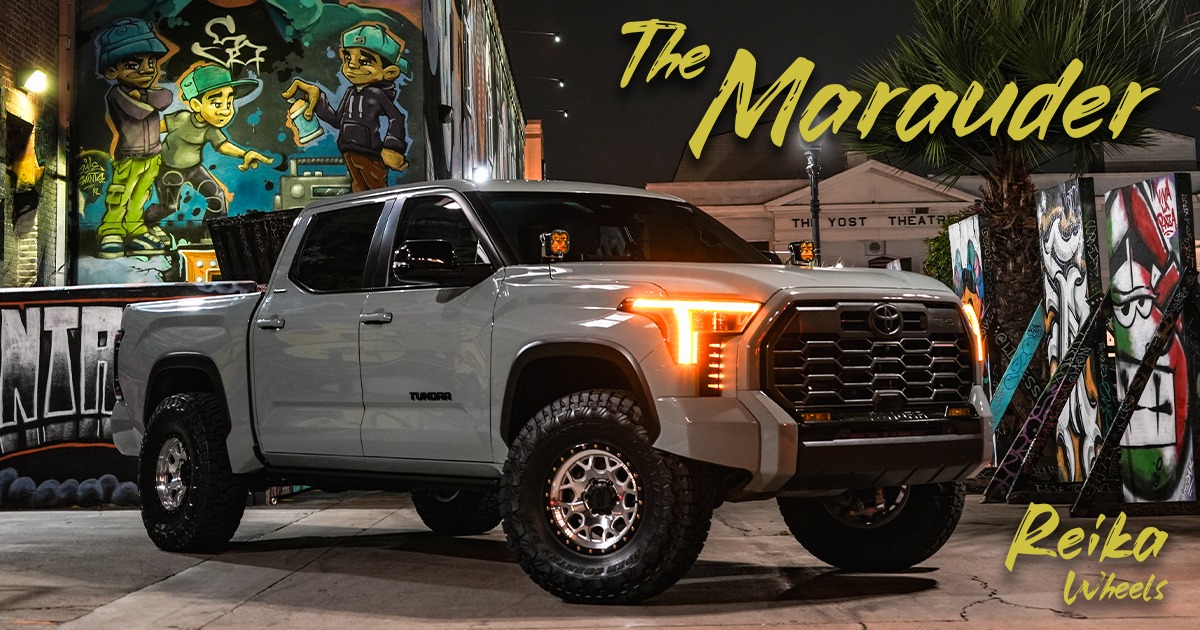Imagine this scenario: you’re on a weekend trail run, and your rig is climbing the trails with ease. Everything feels right until you hear a sudden and abrupt crack. It’s not your axle and it’s not your suspension. It’s actually your wheels. Turns out, it wasn’t built to carry the load you’ve been hauling.
When it comes to off-roading, we often focus on tires, lift kits, and of course, the wheels. However, as sharp as your wheels may look on your build, the element of wheel load rating is one of the most overlooked specs in the off-road world. In this post, we’re breaking down what wheel load rating really means, why it matters, and how to make sure you’re riding in gear that won’t leave you stranded.
What Is Wheel Load Rating?
In simple terms, a wheel load rating is the maximum weight a single wheel is designed to support under normal use. This rating reflects the wheel’s structural integrity, which is influenced by factors like the type of material used whether it’s steel or aluminum. The wheel’s construction process also plays a big role, and its intended vehicle class or usage scenario. Load rating isn’t just about how strong a wheel is within a lab, it’s about making sure that the wheel can reliably hold the weight of your vehicle, passengers, and gear in real-world conditions, especially within an off-road environment.
It’s important not to confuse this with a tire’s load index. They are separate specs even while both affect how your vehicle performs under weight. A tire might be rated to carry 3,000 lbs, but if the wheel under it can only carry 2,000 lbs, then there becomes a risk of your tires or wheels damaging.
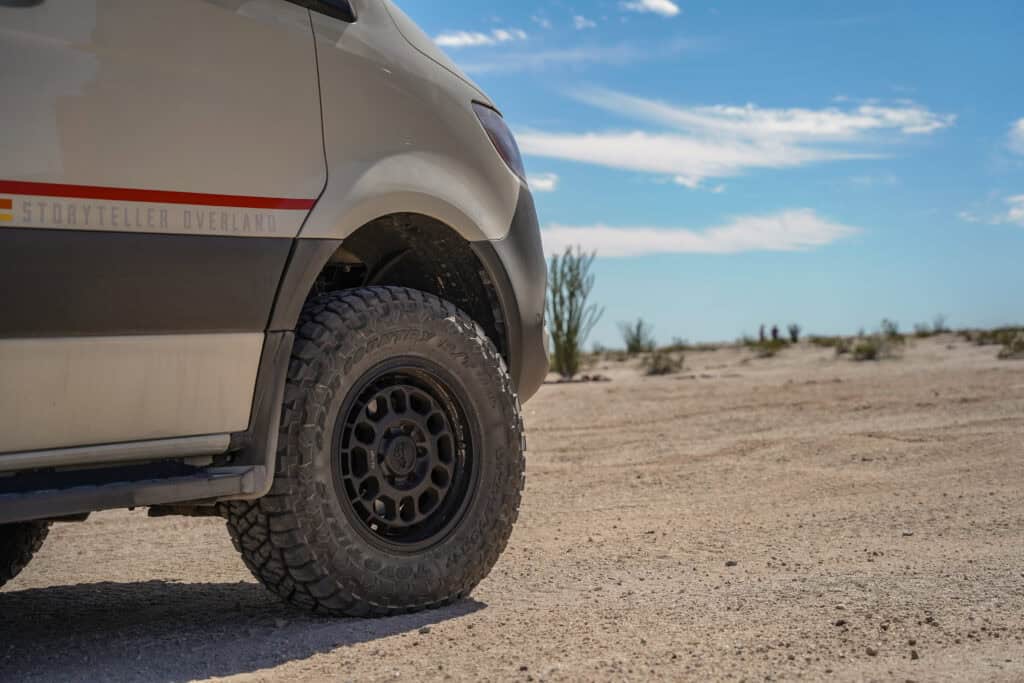
Why Does Load Rating Matter?
Off-roading puts heavy stress on your wheels because when you hit uneven terrain or climb rocks, you’re creating loads can potentially harm your wheels. Proper wheel load rating and tire pressure reduces this as wheels can absorb impacts more easily.
If the load rating isn’t right, there can be instances of:
- Structural cracks
- Poor handling and safety
- Damaged suspension or steering components
Proper wheel load rating maintains that the wheel’s internal structure including its hub face, spokes, and barrel can withstand any impacts out in the trails while supporting the real-world load of your overland / off road build.
You generally just want to avoid carrying more than what your wheels and tires can maintain safely. It can certainly happen: a fully built overland rig carrying essentials with stock wheels not rated for the extra load. It’s bound to fail at some point.
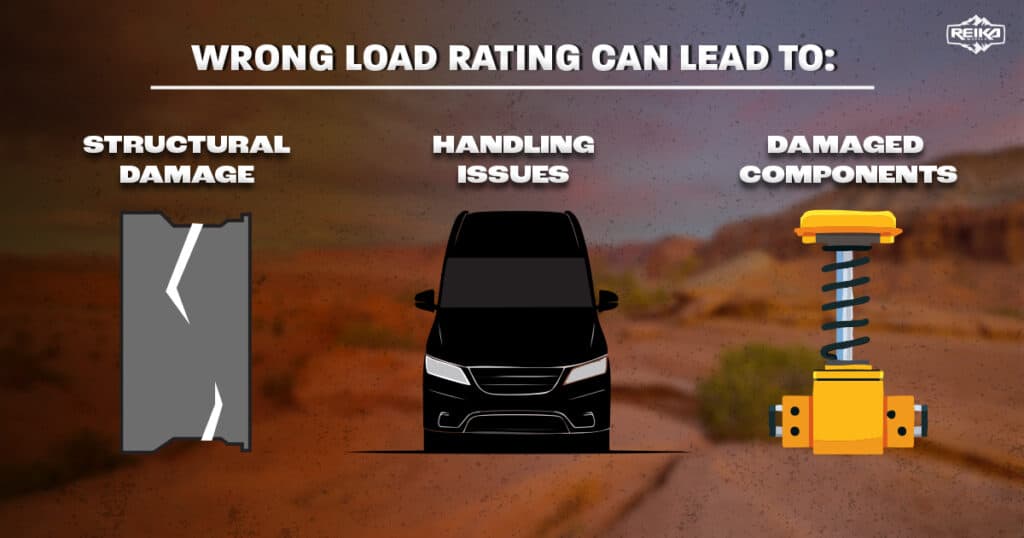
Matching Load Rating to Your Vehicle & Use Case
Getting the right wheel load rating for your rig is about keeping you safe and making sure your setup can handle the way you actually drive. Each wheel is designed to carry a certain amount of weight, and when you’re loading up with gear, passengers, or rig upgrades, that weight adds up fast.
Start by checking your vehicle’s Gross Axle Weight Rating, which you can find on your door jamb sticker. Take the higher GAWR—front or rear—and divide it by two. That gives you the minimum load rating each wheel needs to safely support that axle. You’ll usually find the wheel’s load rating stamped on the back of the wheel.
If you’re towing, carrying lots of gear, or running a beefed-up off-road setup, it’s smart to go above that minimum. A higher load rating gives you some breathing room for those moments when one wheel takes a harder than usual impact. However, having a wheel with a higher load rating doesn’t simply raise your vehicle’s overall weight limit, it just means your wheels won’t be the weak link.
And if you’re swapping out for aftermarket wheels, always double-check the specs to make sure they can hold your vehicle’s GVWR. The team here at REIKA Wheels engineers each set of wheels meant to exceed or meet standard load requirements.
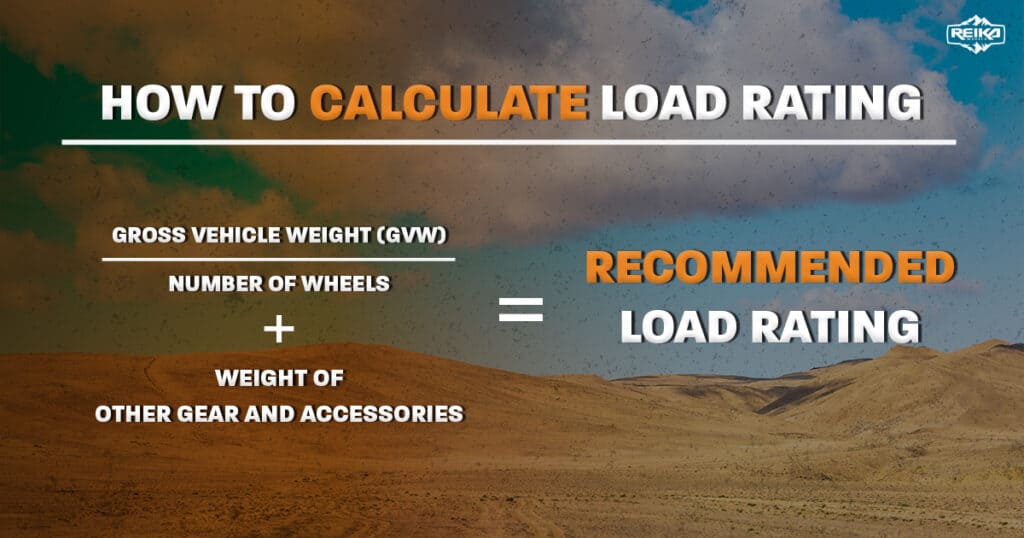
Choosing the Right Wheels
Beyond load rating, there are a few more key things to keep in mind when choosing the right wheels for your build.
Construction is important to the look and build of a wheel. Cast wheels are typically more affordable while flow-formed wheels offer a great balance of strength and weight, and let’s not forget about forged wheels which are another option if you’re after heavy durability. We craft some of our wheels here at REIKA using flow-formed technology to hit that sweet spot between performance and durability.
Size and offset also matter. The wrong fitment can cause clearance issues with your tires. It’s always worth double-checking these specs to make sure everything plays well together.
Final Thoughts and Takeaways
Wheel load rating isn’t the most interesting topic in the off-road world, but it could be the difference between a successful run and being stuck somewhere.
At the end of the day, it comes down to a few key points: know your rig’s total weight once it’s fully loaded with gear and mods and make sure your wheels are rated slightly above that to handle that load. A solid wheel setup means more peace of mind, and less chances of wheel and vehicle damage.
We put our wheels through real off-road conditions because we value real world applications such as our popular R35V 3500 Super Single wheel which yes, meets and exceeds JWL and VIA certifications, so you can count on them to hold up when it really matters.
Check out the lineup today to find a wheel that’s right for you and your build!
Frequently Asked Questions
Are higher than required load rating wheels always better?
Not always. While strength matters, an excess of weight and unnecessarily heavy wheels can negatively affect handling, fuel efficiency, and unsprung weight.
Is a stock wheel load rating fine for off-roading?
They might be. But not if you’ve added significant weight or tackle difficult and challenging terrain. Always check the actual load rating and look to invest in quality, durable aftermarket wheels that can withstand a higher load rating.
Are tire load rating and wheel load rating the same thing?
Wrong. They must be considered separately. Your wheel must be rated to handle the same or more than the tire’s capacity.

